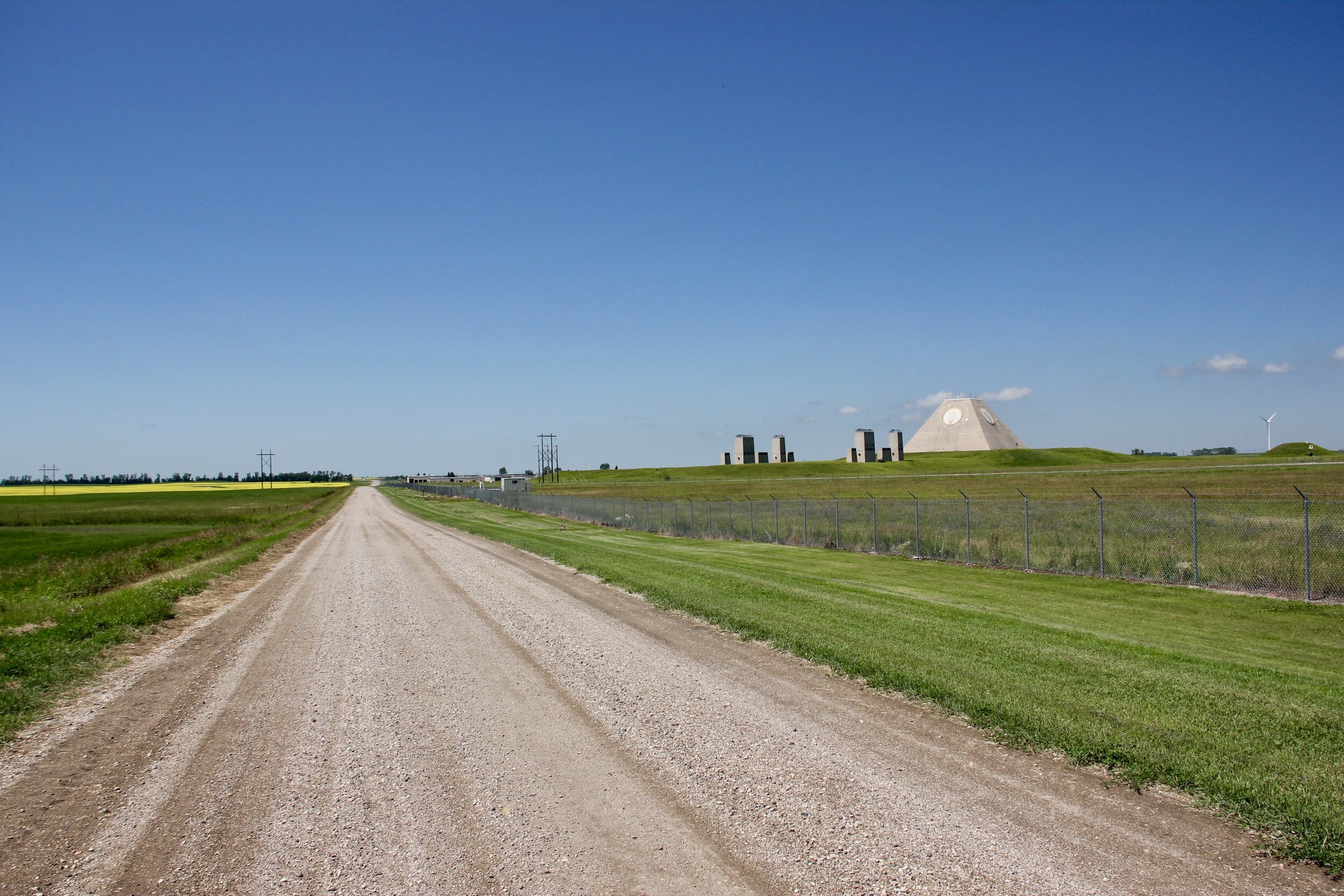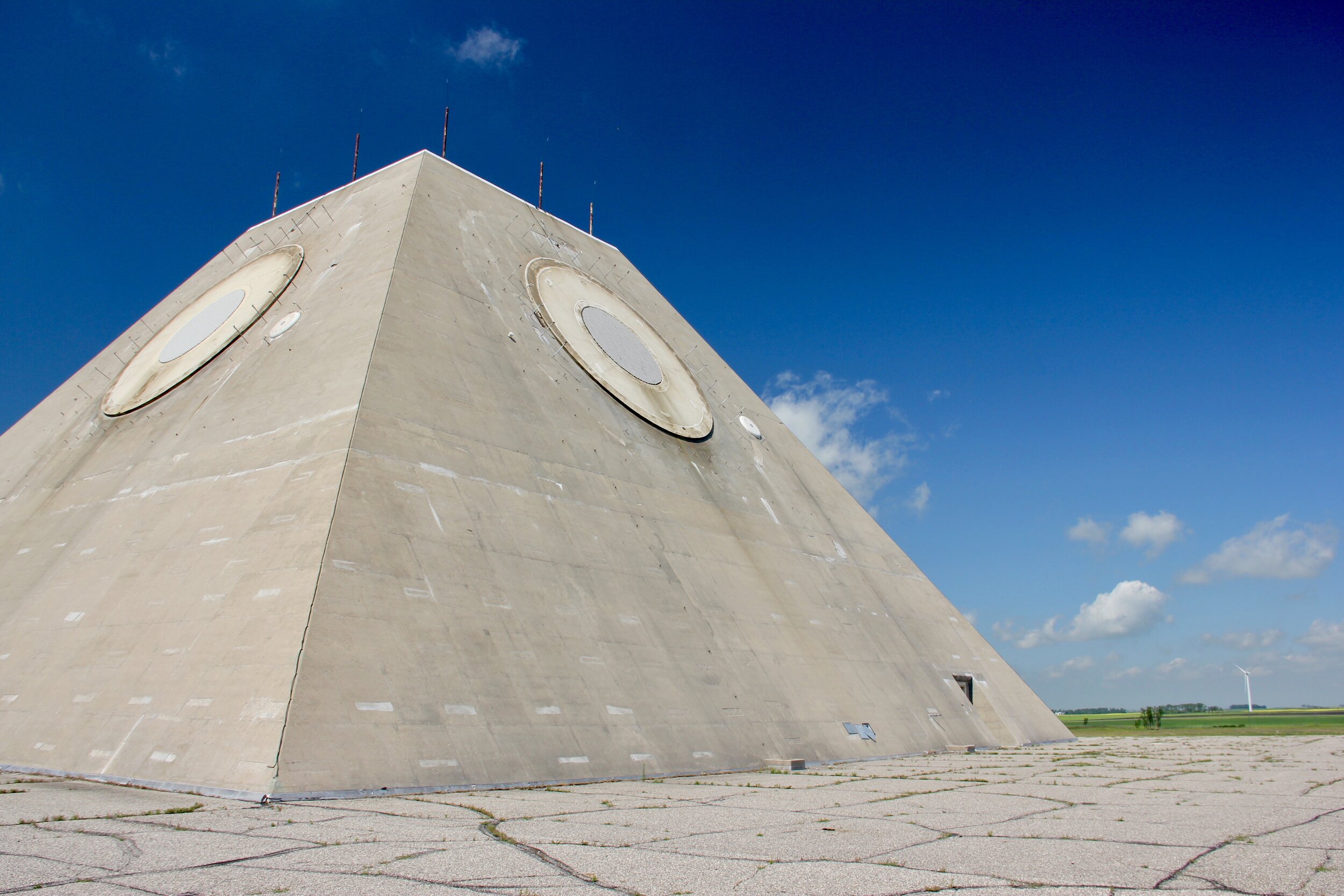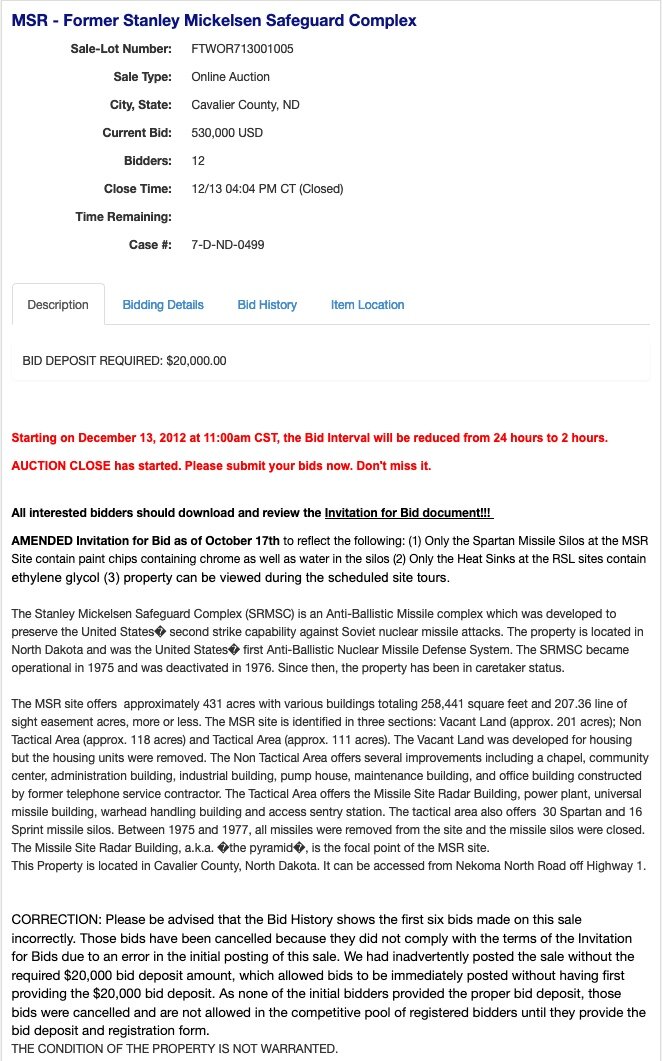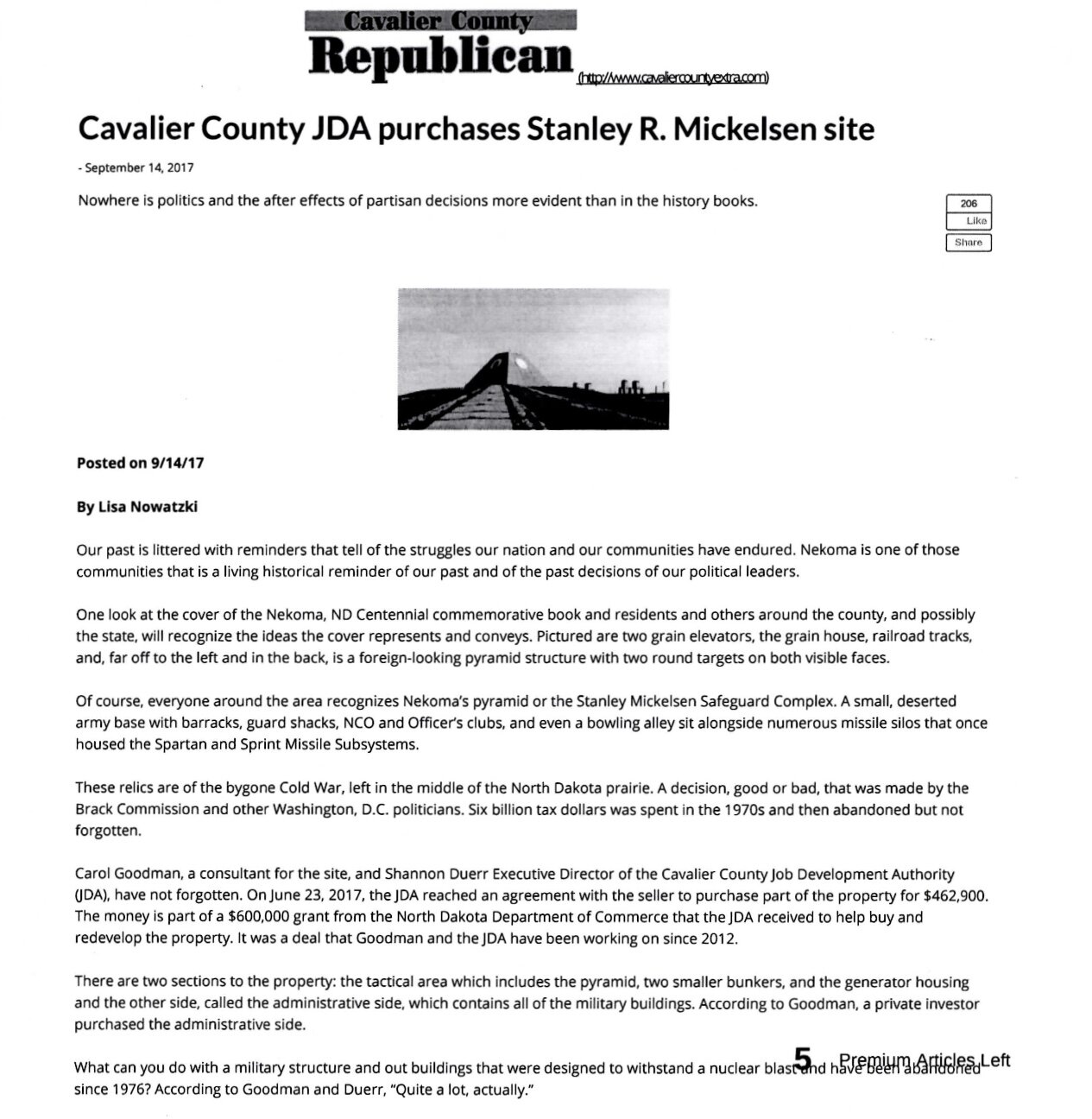Whither SRMSC? In spite of the current state of affairs, the SRMSC may have an interesting future if local groups have their way. I spoke to Clint Esckilsen, a spokesperson and board member of the Cavalier County Job Development Office. Their goal is to have the GSA turn over the MSR complex to local authorities and establish an Unmanned Aerial Vehicle (UAV) test facility with a runway and hangar on part of the 430 acre property. They also want to preserve the historic nature of the MSR pyramid and co-located missile field. Ideally, this would consist of a small interpretive center that would highlight the role of the SRMSC in Cold War history and our nation’s defense. The deployment of the Safeguard ABM system in and around Nekoma had a major impact on the people of Cavalier County, North Dakota. It spiked the local economy during its development and construction....it also had the opposite effect when the system was abruptly shut down in 1976. (System was shut down due to a combination of factors including high operating costs as well as the impact of the SALT II treaty.) In recent years, giant wind turbines have sprouted in the surrounding countryside adding to an eclectic skyline of grain silos, power transmission towers and the MSR complex. All of these structures will meet their demise in one way or another but I have a sneaky feeling that the three foot thick, reinforced concrete walls of the MSR building will keep their pyramid shape for a long time.













